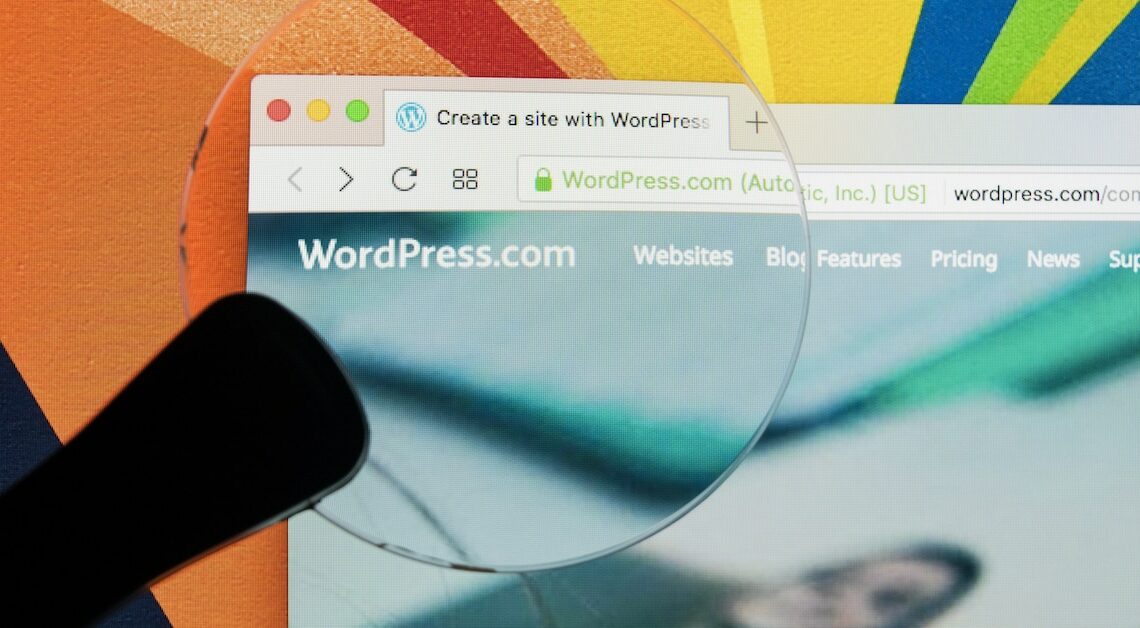
If you want to create a homepage with WordPress, a guide is useful to get you started. The website can be set up quickly using the open source software.
Create a homepage on wordpress.com: A guide
WordPress is an open source software that allows you to create a homepage in just a few steps. In this guide, we will show you how to design your own homepage with WordPress. Beginners are advised to first familiarize themselves with the CMS at ((http://wordpress.com|wordpress.com)). Experienced users can start directly with the installation on their own web space. To quickly and easily gain initial experience with WordPress, you can save yourself the installation and start straight away at wordpress.com. All you have to do is register with WordPress:
- Register with WordPress. To do this, you must provide your email address, username, password and your desired domain. Please note that a free domain ending in “.wordpress.com” cannot contain any special characters such as hyphens.
- Log in. You will land directly in the dashboard – the area where you can access all of WordPress's functions.
- In the menu you will find the most important buttons “Posts” and “Pages”. With “Pages” you can create static content – for example the imprint or a homepage. Posts end up in your blog and are intended for news or current articles.
Preparing for WordPress installation
If you want to design your site more freely, you should install the blog software on your web space or server. WordPress requires MySQL 5.0 or higher and PHP 5.2.4 or higher.
- Obtain suitable web space. Providers such as United-Domains or Strato offer affordable web space packages that also allow for simplified 1-click installation.
- First, check if your hosting provider offers a 1-click installation for WordPress. If so, all you have to do is launch the installation package and WordPress will be installed automatically.
- To install WordPress yourself, first download the latest version.
- Unpack the package and open the file “wp-config-sample.php”. Enter the values of your web space and your database in the list of server data. At United-Domains you can find all the values in your user profile under “Webspace”.
- Save the file under the name “wp-config.php” and upload the entire folder to your web space using an FTP program such as FileZilla.
- Once you have created the installation directory, you can install WordPress on your web space. Start the WordPress installation by opening the “install.php” file in the previously uploaded directory. If the installation files are in the “WordPress” folder, start the installation at “www.musterdomain.de/wordpress/install.php”.
- During installation, you set a user name and password. Your user name will later appear under your posts. Alternatively, you can create new users at any time, for example to write with multiple authors on one page.
- Tipp: Many providers such as Strato offer aInstallation wizard. You start it via your customer login and are guided through the installation process. You can then log in with your access data via the WordPress login page.
Installing themes in WordPress
After you have successfully installed WordPress, either via 1-click installation on your web space or after registering via WordPress.com, your website will have a default design.
- Log in to your WordPress. You will be taken to the dashboard, where you will find all the functions, such as the design of the website, editing individual posts or general settings.
- In the dashboard you can also select themes, i.e. the design of your website. Under the menu item “Themes” you can select your favorite design. There is a large selection of WordPress themes available, which you can then install. For a preview, click on the theme and then on “Activate”. By the way: If you later realize that the theme is not optimal for you, you can change the design later. Your content will then simply be transferred to the new layout.
- Under “Settings” you can change general settings, but also posts, media, Deactivate or configure comments. You can specify whether visitors to your website can leave comments or whether users must first log in to see the content of your website.
- Now it's time to create pages and posts. You create pages for static content, such as the imprint, directions or the “About us” page. Posts are automatically sorted chronologically and are suitable for blog entries or news. You can use the “Create pages and posts” function to create the relevant content in an editor. There are blocks for various building blocks such as paragraphs, headings, tables or images.
- You then arrange your pages and posts in a hierarchy. You implement the page menu on your website via “Design” and “Menus”. You can change the menu structure you have defined using drag and drop, for example by adding or removing individual elements.
